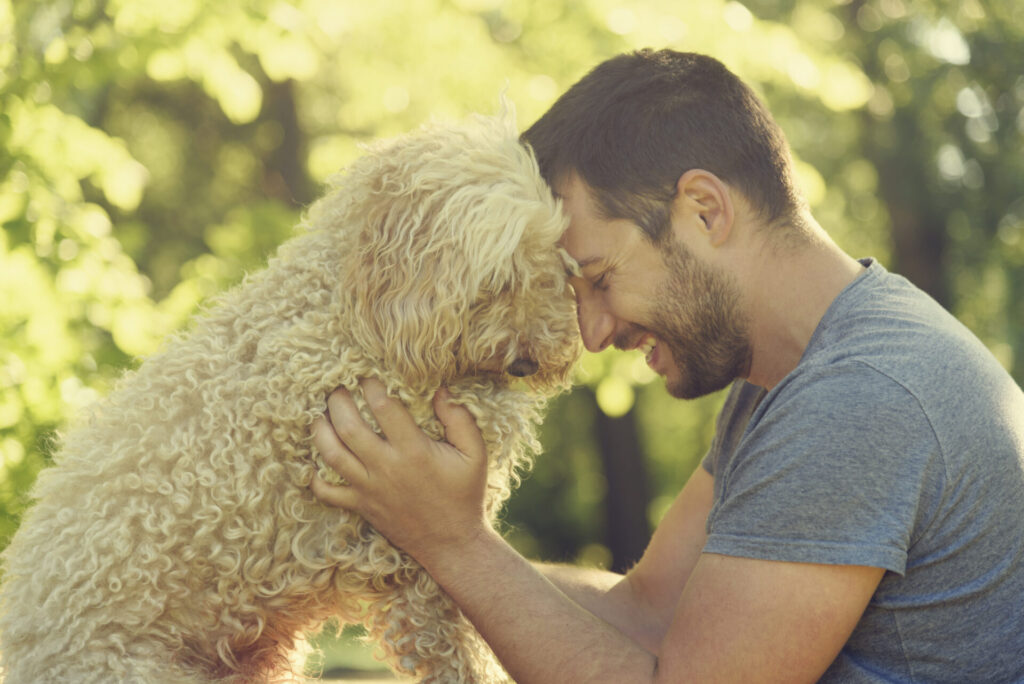Our furry children come into our lives sometimes as puppies, but also as grown abandoned dogs in need of a home and love. With hind knee injuries being the most common among canines, there is a lot that can be done if we have our dogs since puppyhood to prevent the tearing of the ACL. But if you have a rescue, what types of preventative measures can you take to ensure the safety of your dog’s knees?
With a sometimes unknown past, owners of rescue dogs have not been able to control the diet of their dog, exercise schedule, and level of trauma from the beginning. There is still a lot that can be done to ensure that your rescue dog minimizes the chances of tearing their ACL.
The primary actions the owner of a rescue can take to ensure the healthy stifle of their rescue include:
- A Clean Healthy Diet
- Regular Walks and Physical Activity
- Mobility and Massage Exercises
The Rescue Dog: Owners Of Formerly Unhoused Dogs
There are many international as well as national programs to help unhoused dogs find good homes with caring owners. Whether you planned to inherit a rescue dog, or it just happened that you were brought together, there remain certain health concerns that affect this demographic of dogs that may be different than if you owned them from puppyhood.
Mal-nourishment is common among rescue dogs, particularly if they have been living on the streets, or if they have been rescued from third world countries where beach dogs run rampant.
The quality of a dog’s diet matters, not only to ensure a healthy weight is maintained, but because the food nourishes and strengthens bones and connective tissues.
Your rescue dog may have spent too much time roaming, walking, and running away from different situations; this means that their legs and bodies have not had the rest they truly require to be healthy.
So, as the owner of a rescue dog, what are a few things that you can do to ensure that your dog’s knees are as healthy as possible?
Nutrition Matters To Maintain Healthy Connective Tissues In a Dog’s Knee
When your rescue dog first moves in with you, one of the first things you will do is make sure that they are well fed. Not too much, not too little, and yes the quality matters.
There are a plethora of opinions about what a dog should eat, from those who make all of their dog food at home, to veterinarian recommended pre-packaged food. The kind of food that you choose to feed your rescue is beyond the scope of this article. It is important that you are feeding your rescue dog food high in iron, calcium, and magnesium to ensure the health of the connective tissues that surround the hind knee.
Further, you may be tempted to over feed your rescue dog to overcompensate for their earlier life where food may have been scarce. Please, resist the temptation, as dog knee injuries become increasingly more likely if your dog is overweight. Meals ought to be regular and high in nutrition to keep all portions of your rescue dog healthy!
Regular Exercise: Walking On and Off the Leash
A common issue among rescue dogs is that they may not be used to a leash. When you put your new family member on a leash for their walks they may tend to pull severely. This can be dangerous for both the owner and the dog.
When dogs pull severely on a leash they are accustomed to this can put an enormous strain on their hind knees and put them at a great risk for injury.
As an owner of a rescue, be sure to find a trainer or obedience school who can help your dog become accustomed to the leash. Be sure to find safe places where your dog can roam freely off of the leash as well.
Be consistent with your dog’s exercise routine, this will help prevent the ‘weekend warrior’ syndrome. In other words, many dog knee injuries occur in dogs who are mostly sedentary during the week and then on a Saturday head to the dog park and go hard. These dogs are not used to daily exercise and running, and the bursts of energy needed as the dog pushes off or lands on the hind knee. Without consistent exercise random acts of intense exercise can cause full ruptures.
As the owner of a rescue, be sure to regulate and habituate your dog’s exercise regime as soon as possible, and allow for off leash time in a safe controlled environment.
Rescue Dogs Make Great Additions To The Family And Are Not Necessarily At A Higher Risk For Knee Injury
The challenges and triumphs of being the parent of a rescue dog are unique. There is also no reason why your dog needs to be at a higher risk for knee injury when correct preventative protocol is followed.
A healthy diet, healthy weight as well as strong bones are important. Regular exercise on and off the leash goes a long way in preventing undue strain on the hind knees. You can also enlist the aid of a professional to massage and move the hind of the knee while your dog rests.
Acupuncture and other alternative care can be used not only in the treatment of a knee injury, but as well as in its prevention.
Many dogs the world over need good homes, and if you have provided such a home to your dog, then you have done a great thing!

